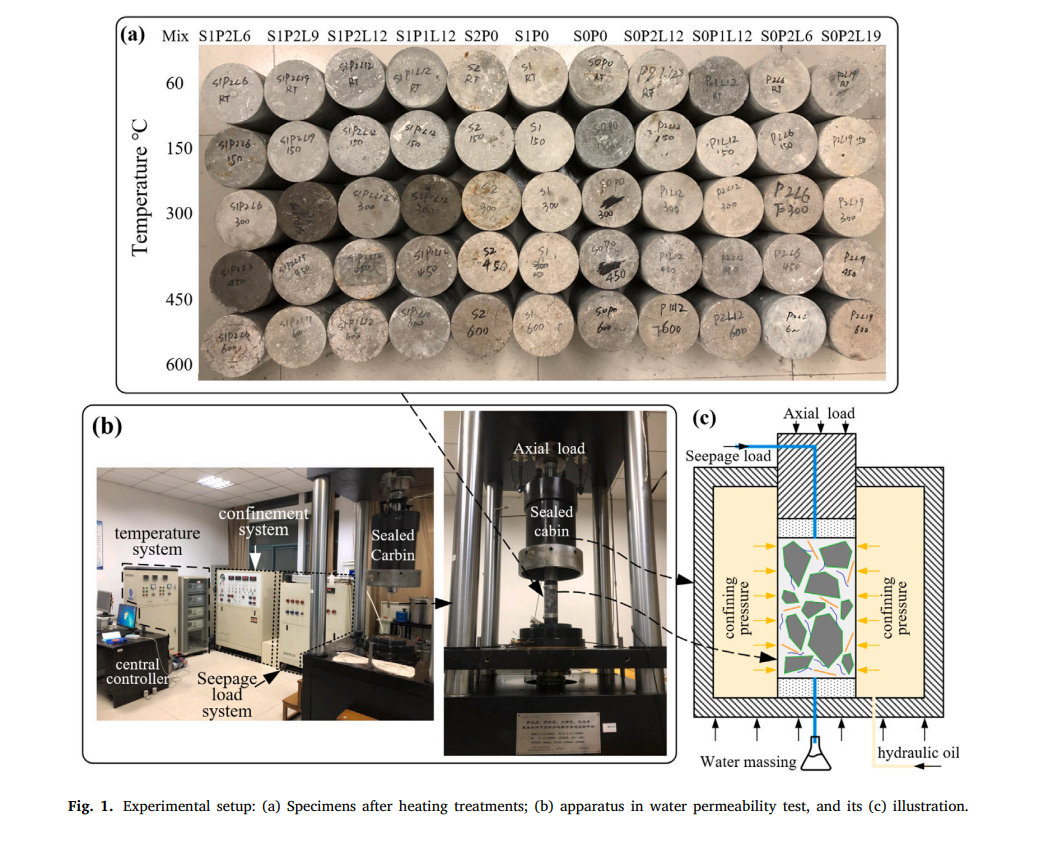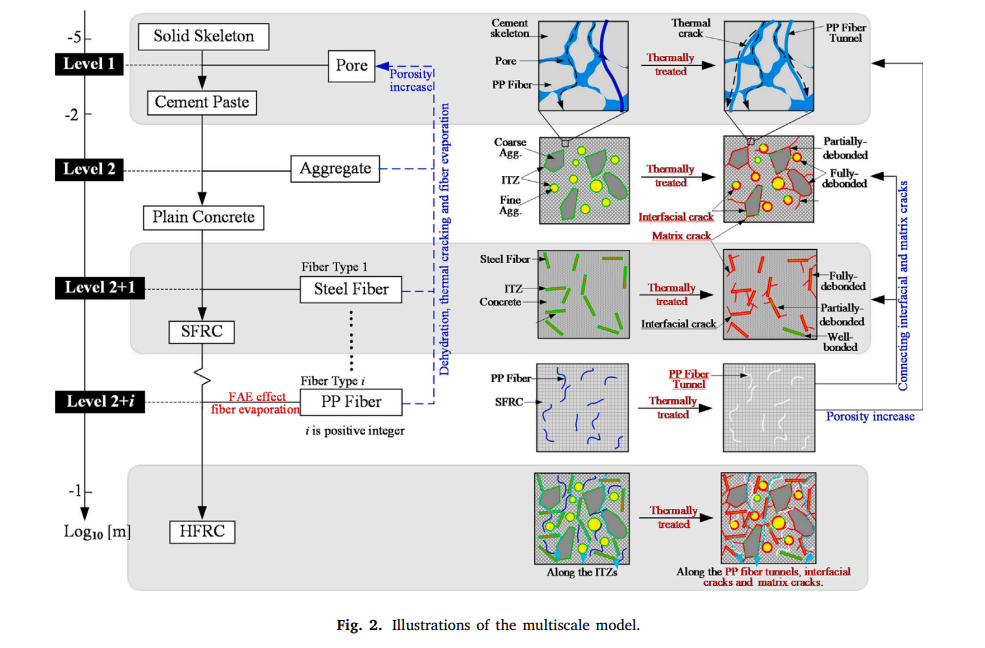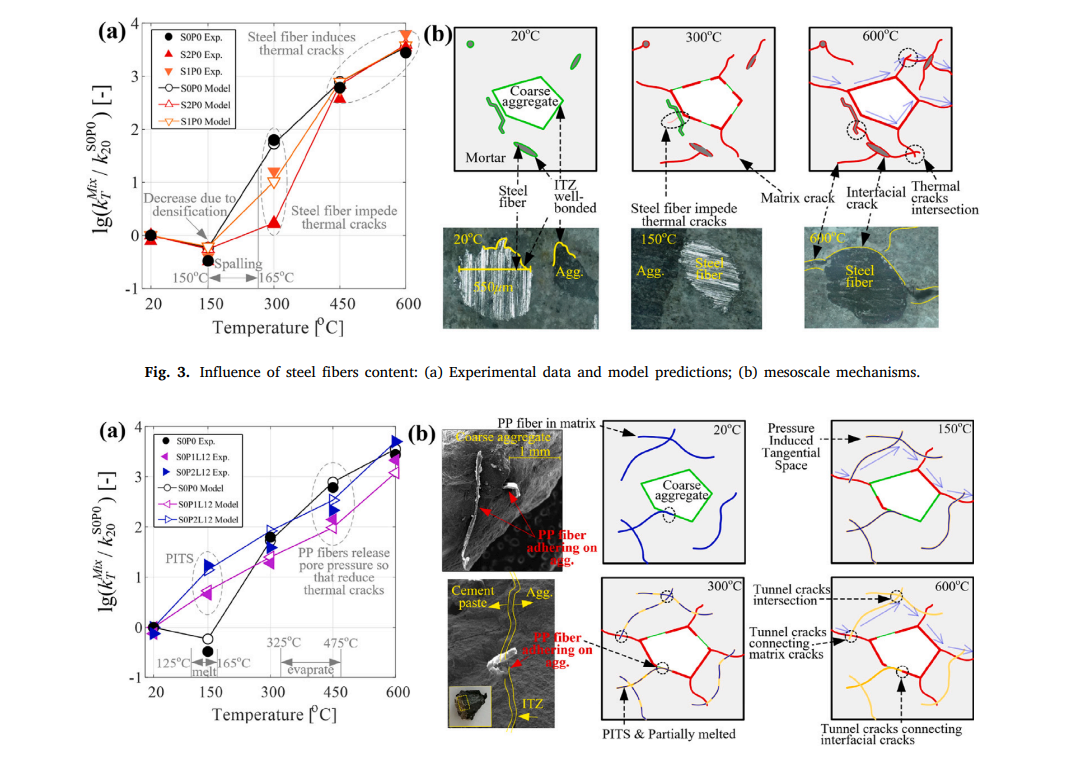Multiscale cracking pattern-based homogenization model of water permeability in hybrid fiber-reinforced concrete after high-temperature exposure
Hybrid steel-fine polypropylene fiber-reinforced concrete (HSPFRC) can effectively prevent thermal spalling. Its permeability at high temperatures plays a crucial role in avoiding spalling, and varies with the type, dosage, and length of fibers utilized in concrete mix. In this study, the water permeability of eleven different HSPFRCs after five different heating treatments is experimentally measured with a flow path representative of the material heterogeneity. Addition to the knowledge of the PP fiber tunnels around 150 ◦C, it is newly found that the thermal cracks caused by aggregate thermal expansion, instead of the evaporated PP tunnels and steel fiber induced thermal cracks, contributes the main part of water transport system over 150 ◦C. Steel fiber in SFRCs significantly reduces permeability by a factor of 10 through bridging forces that lessen the damage before reaching a temperature of 300 ◦C. However, after getting this temperature, permeability increases significantly by a factor of 104 . For PFRCs, the permeability increases by a factor of 102 at 150 ◦C and continues to grow with the increase of fiber content and length. HSPFRCs exhibit similar patterns to PFRCs in terms of permeability. As the main innovation of this work, a multi-scale cracking pattern-based homogenization model for permeability in HSPFRC during and after high-temperature exposure is formulated and calibrated based on the experiments conducted in this research and validated using results from other tests.



![]() Multiscale cracking pattern-based homogenization model of water.pdf
Multiscale cracking pattern-based homogenization model of water.pdf